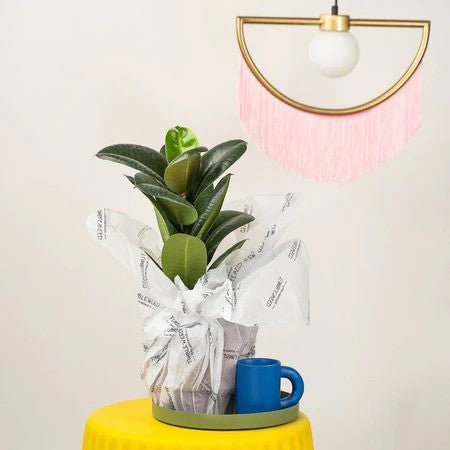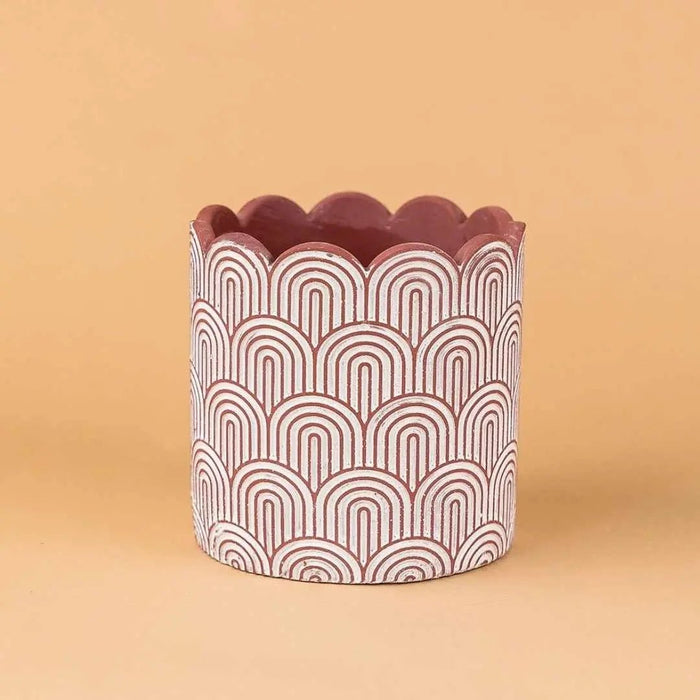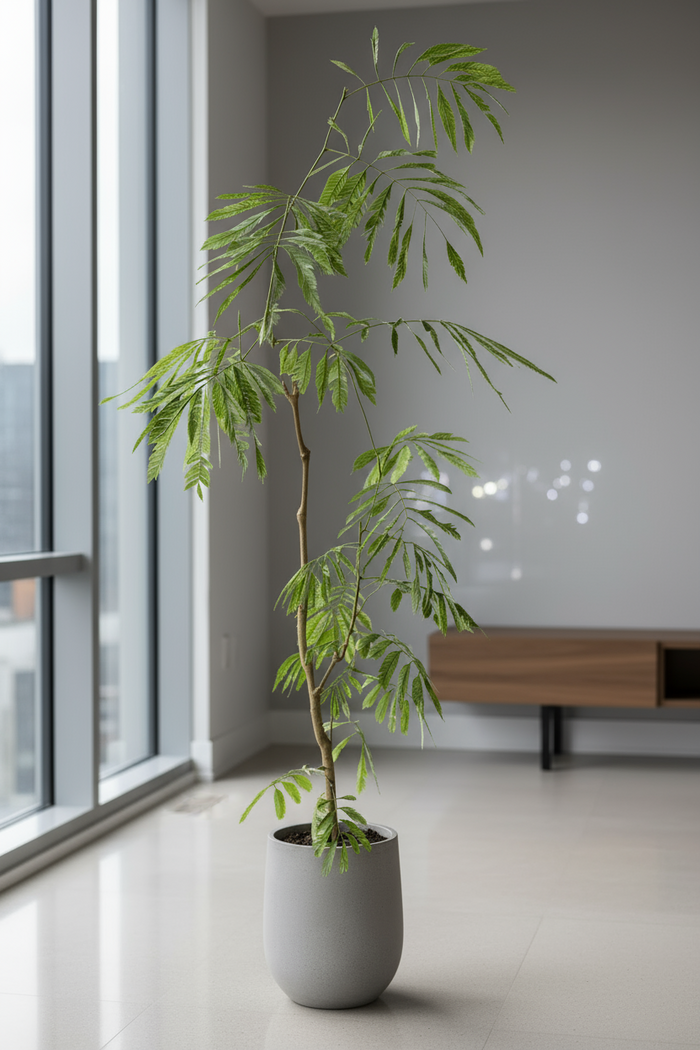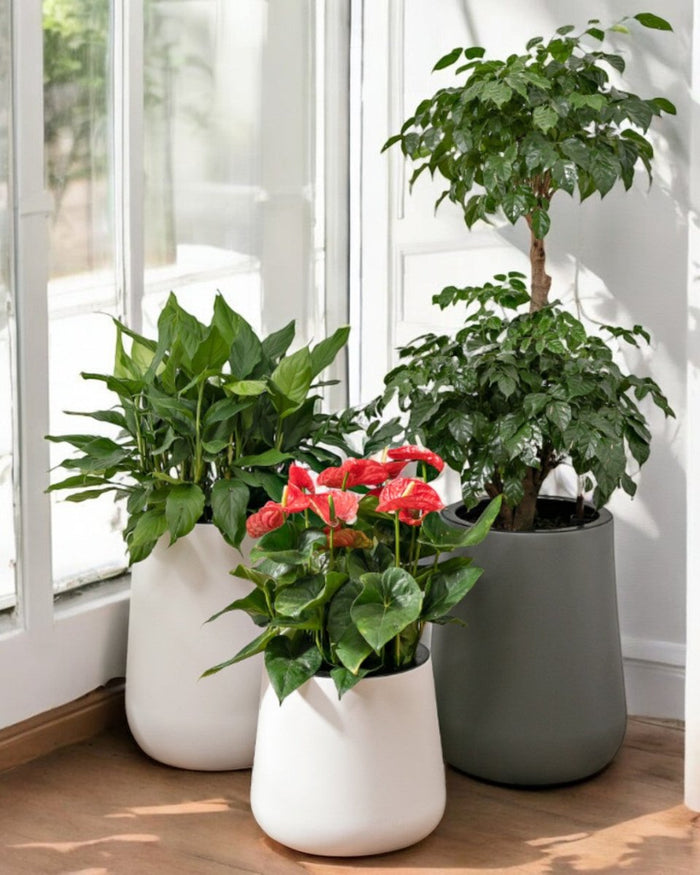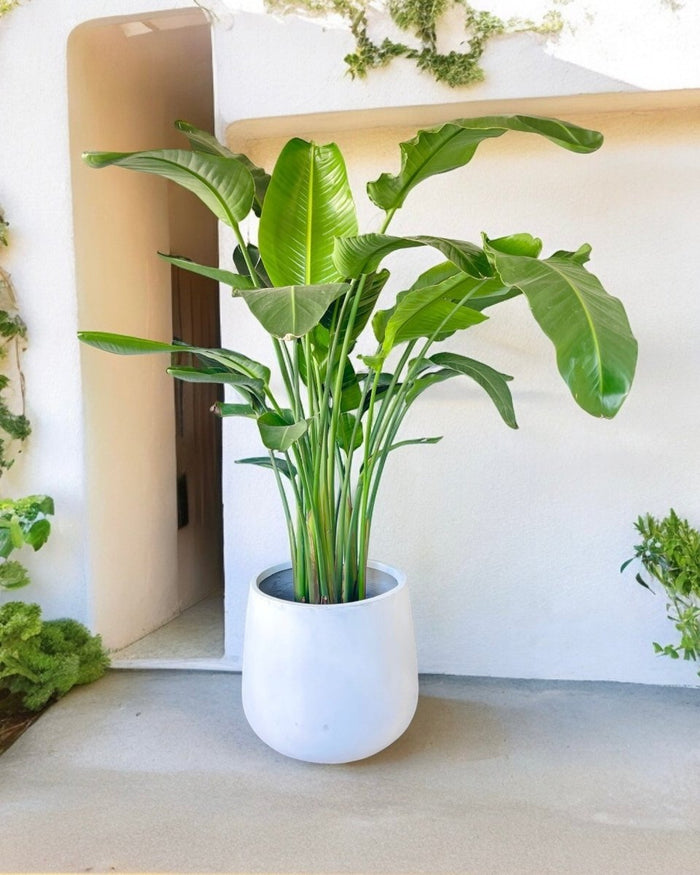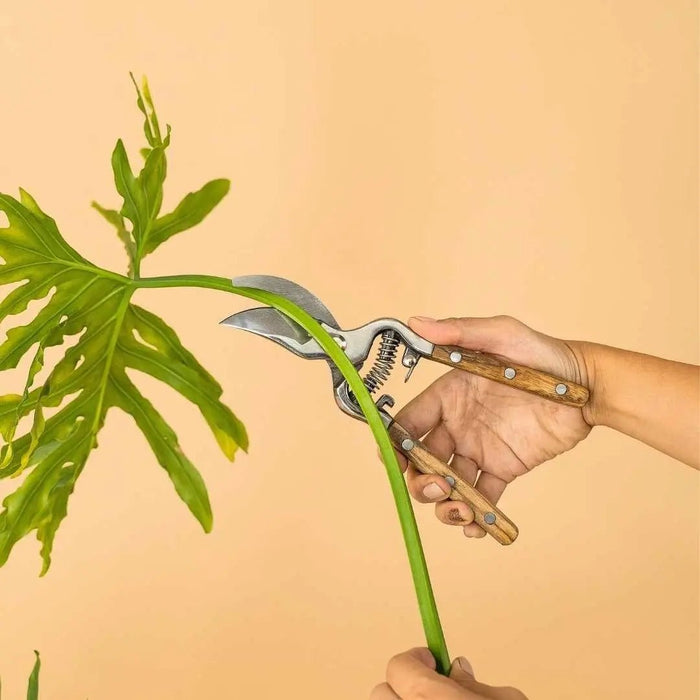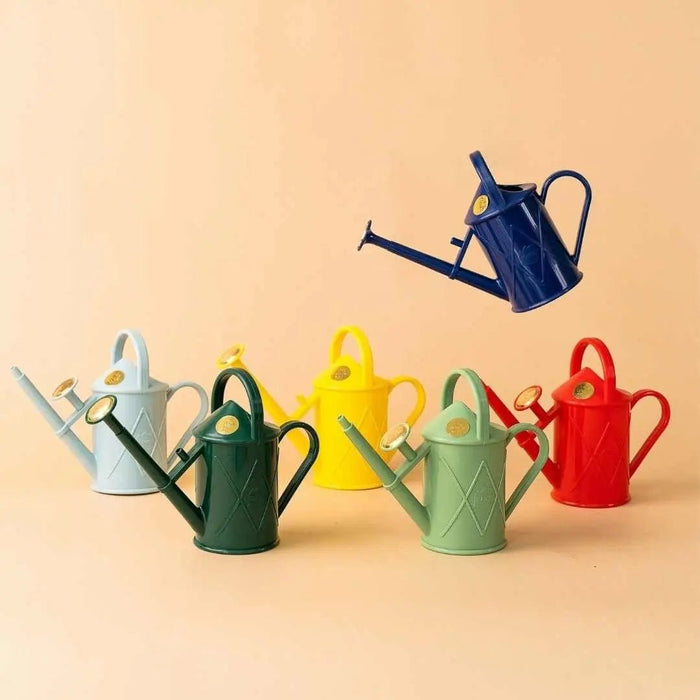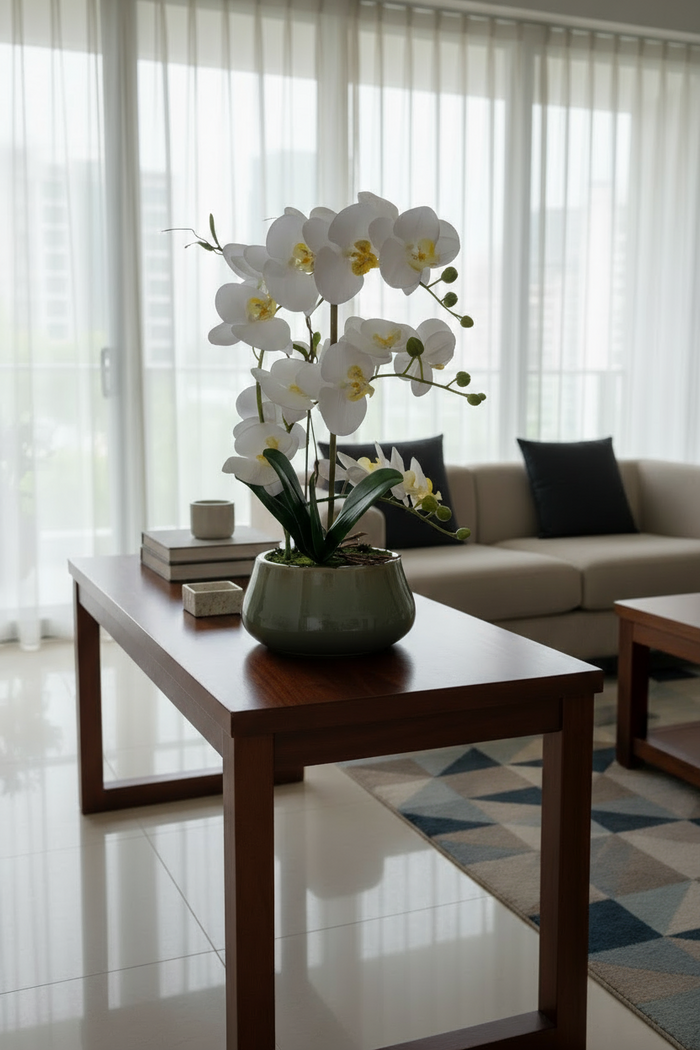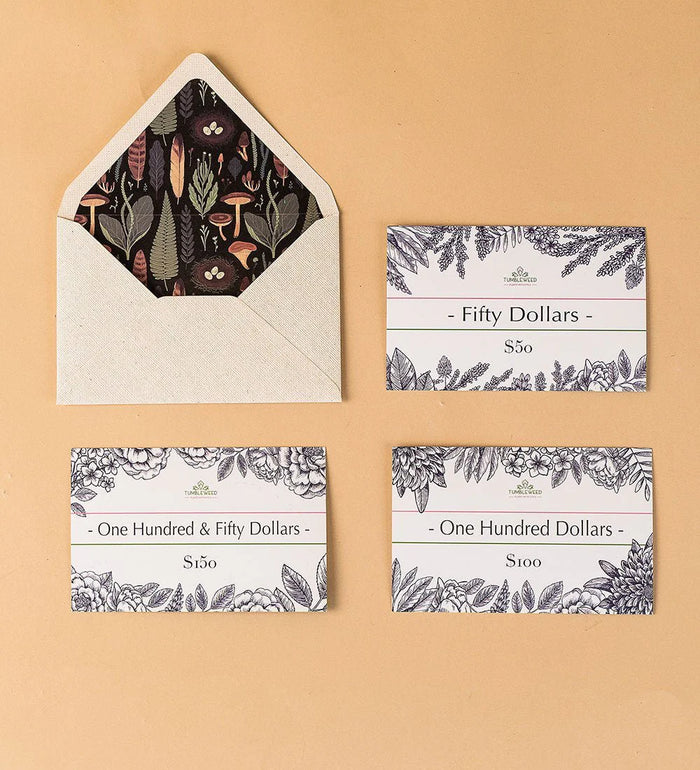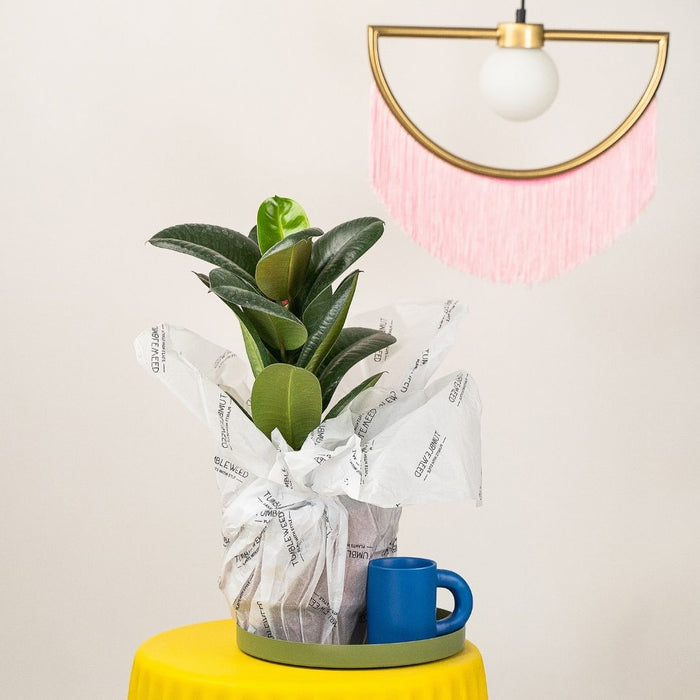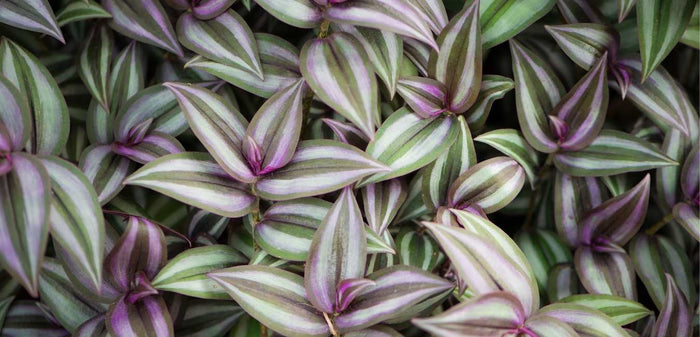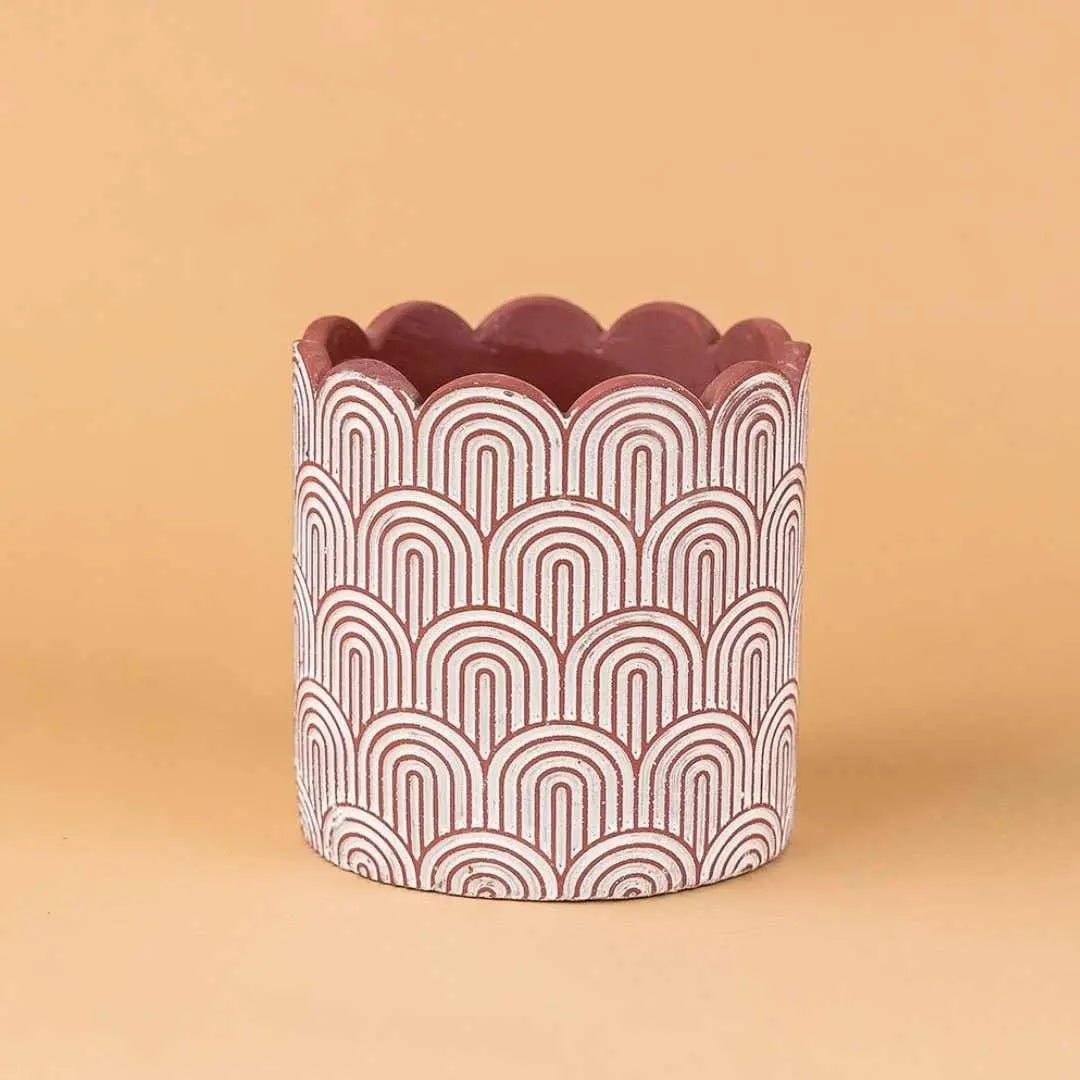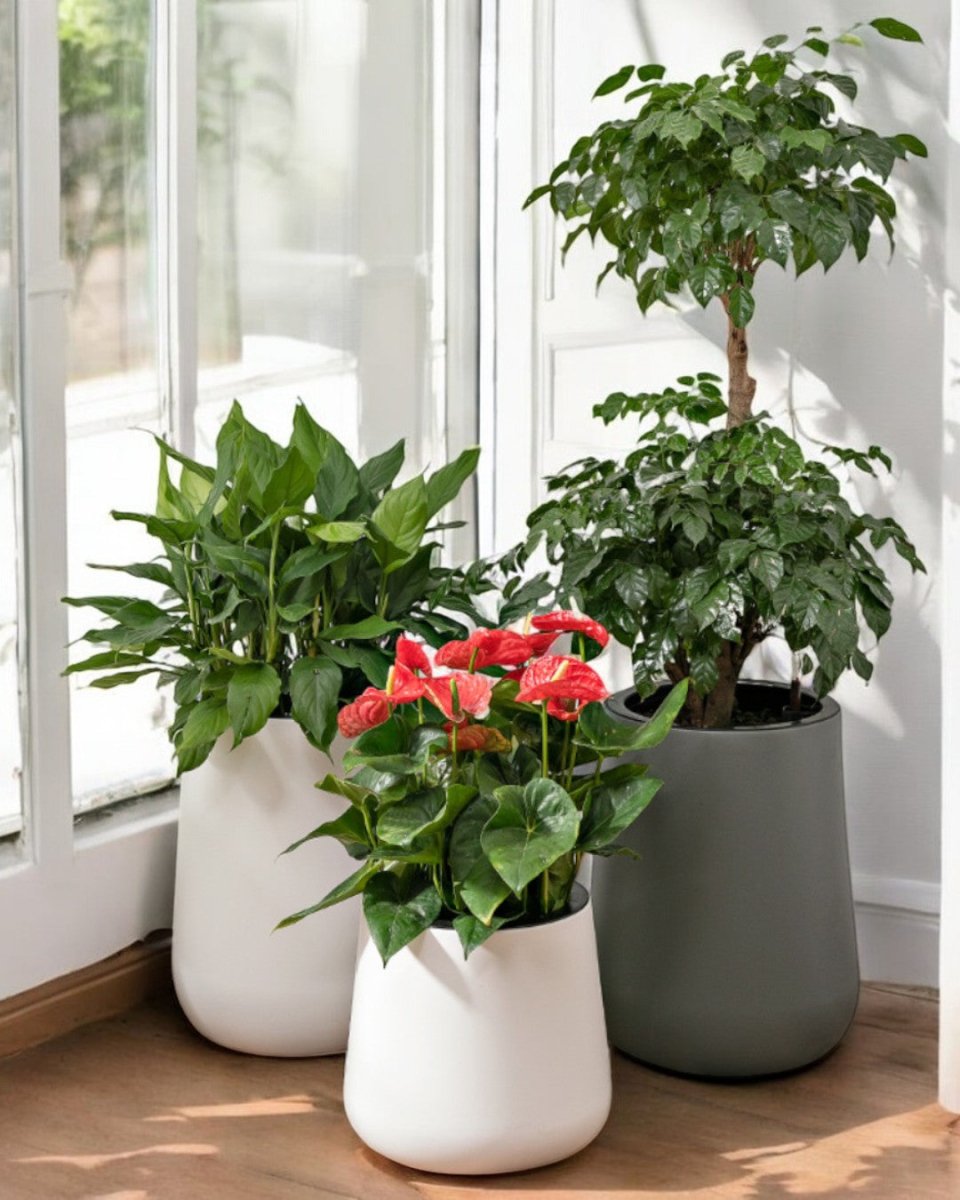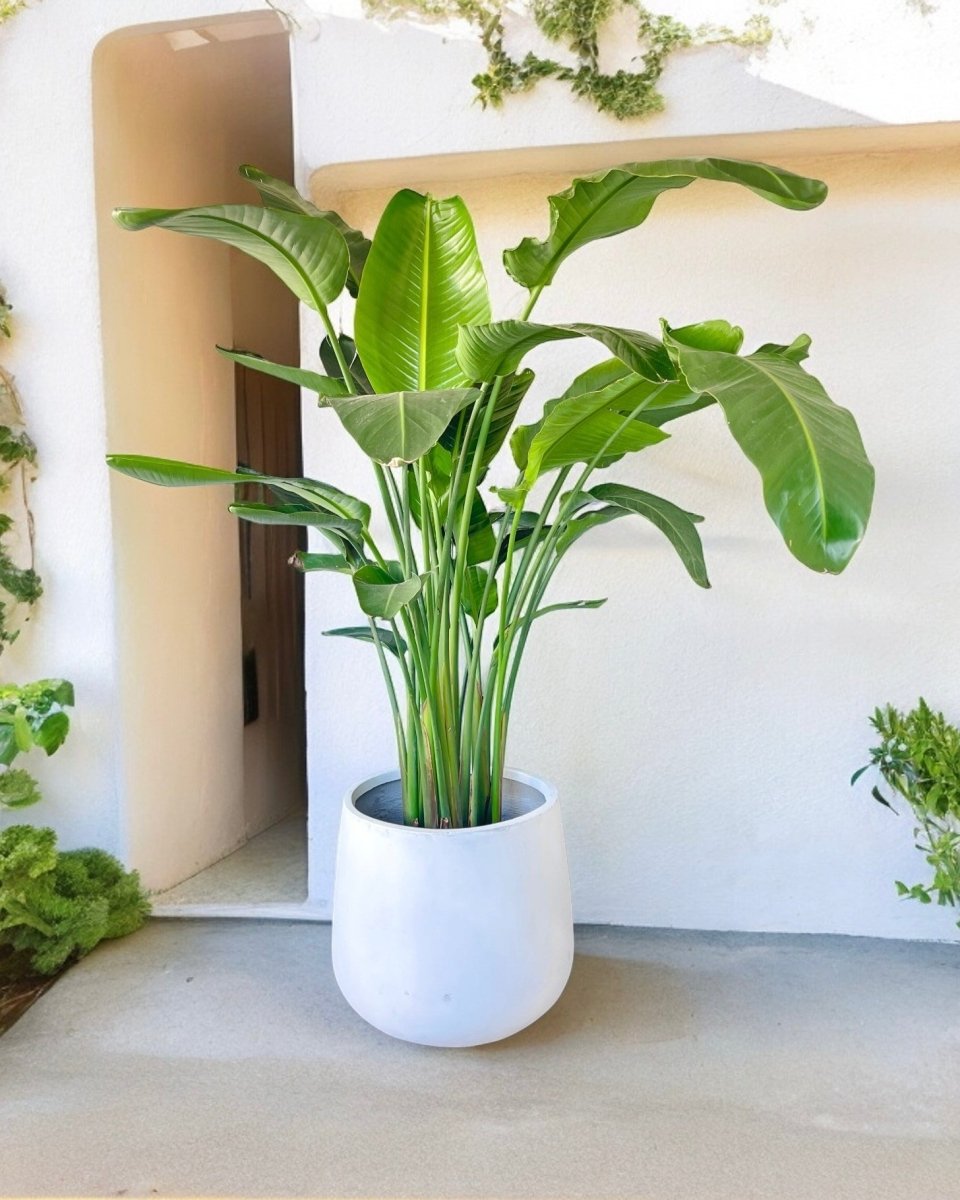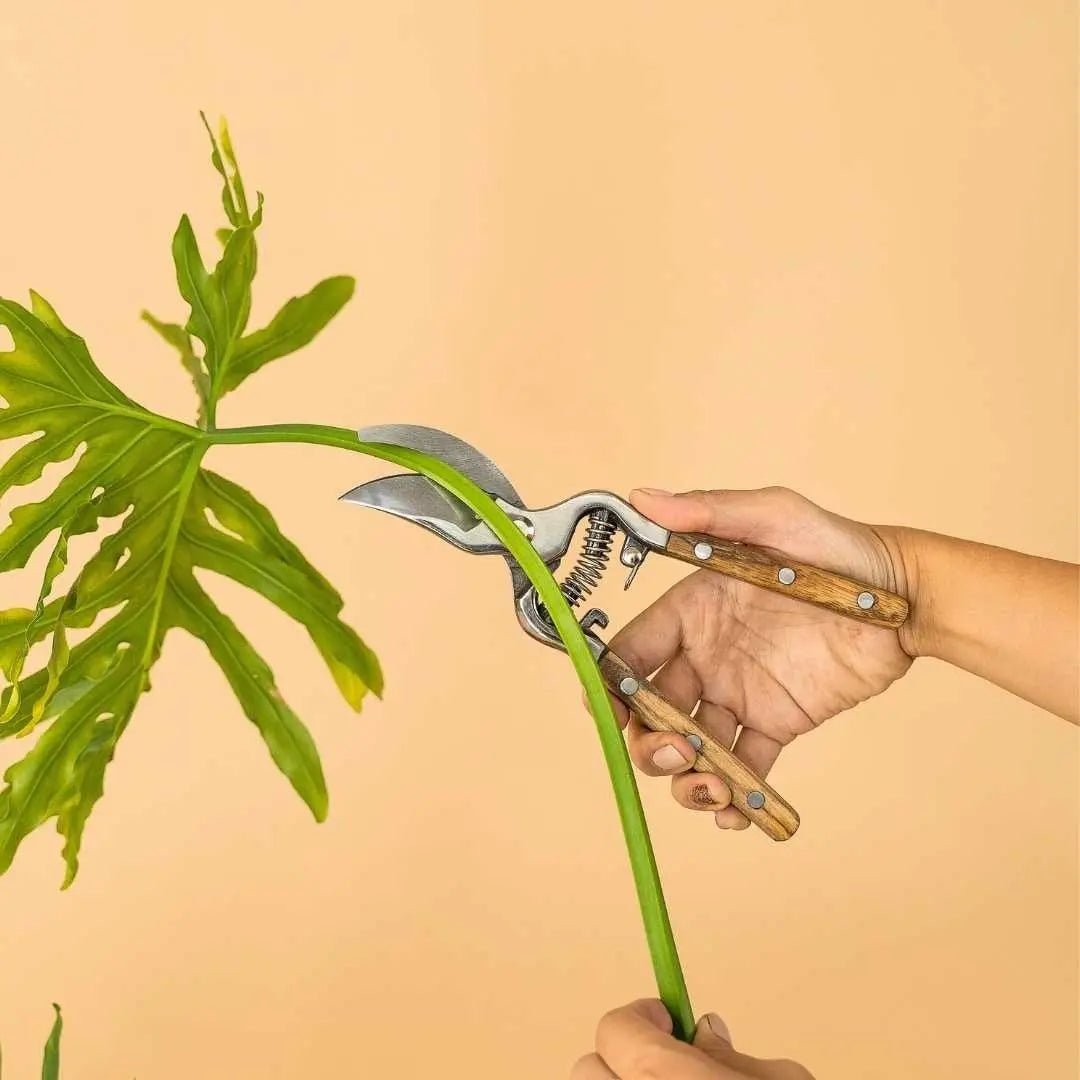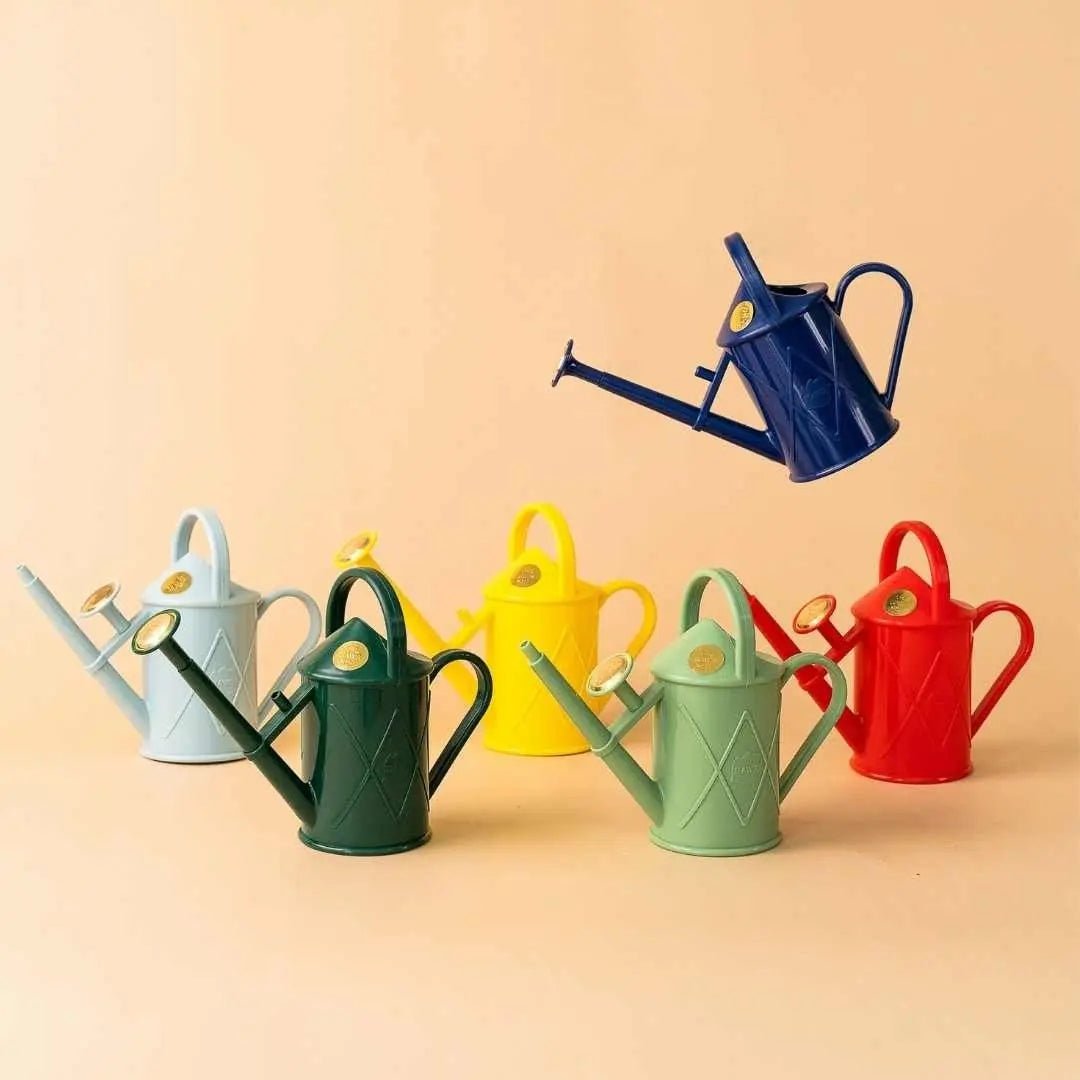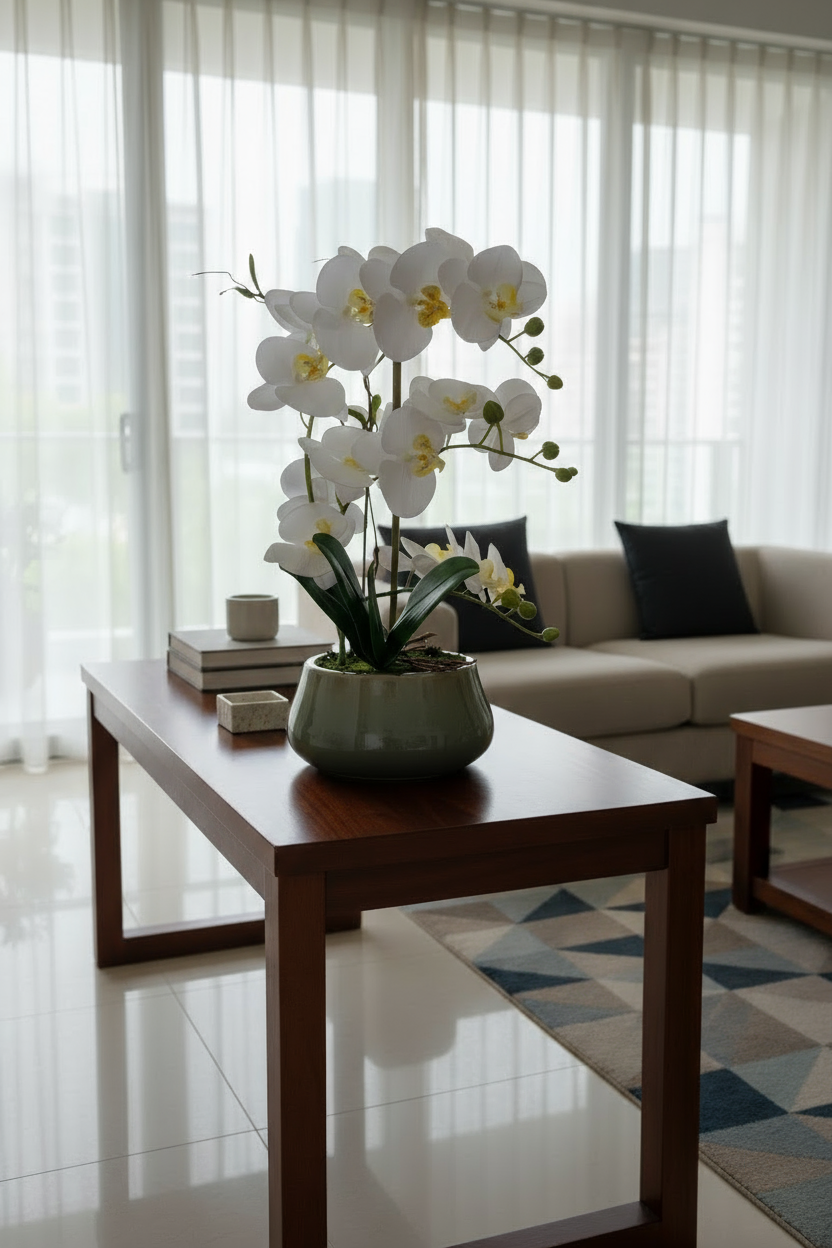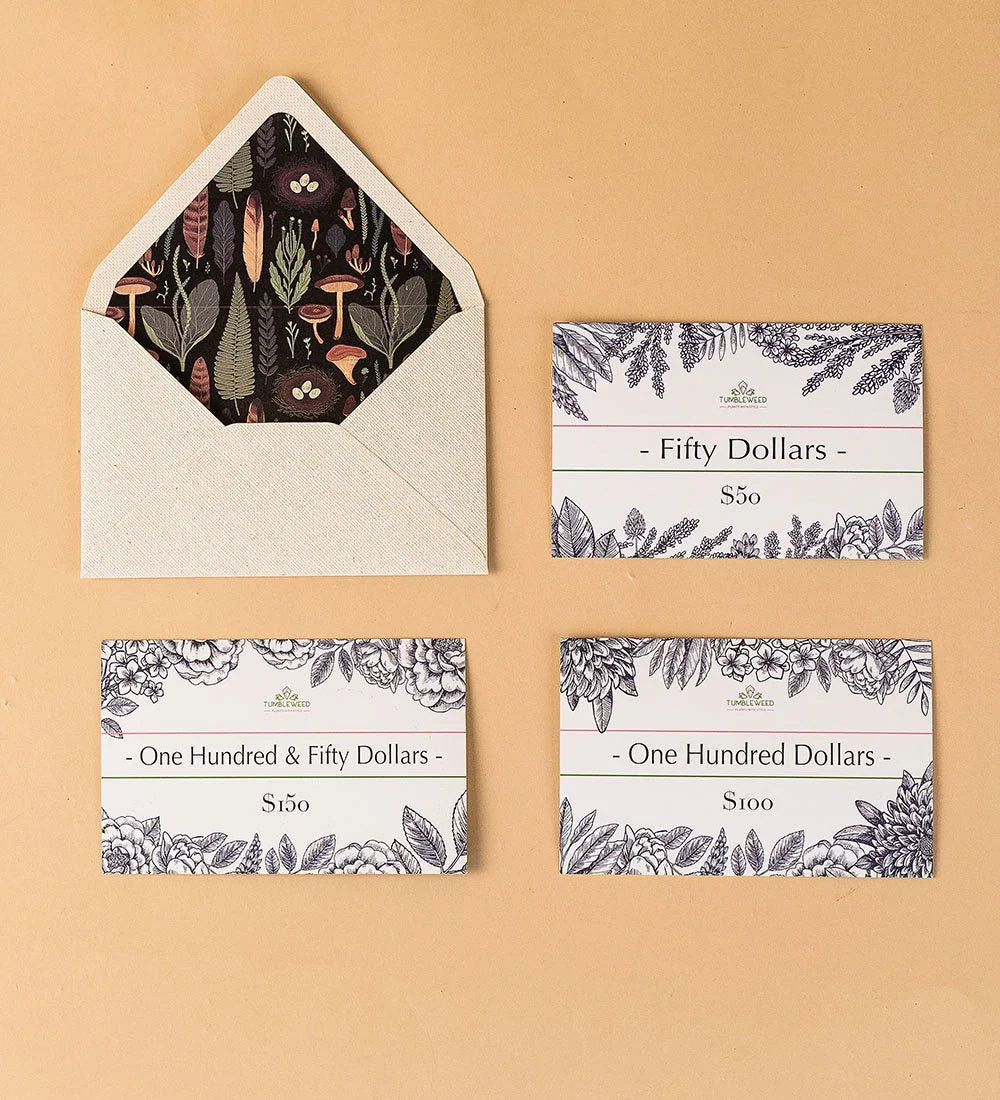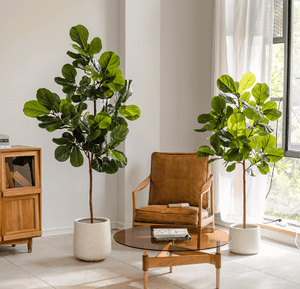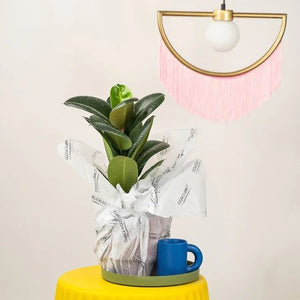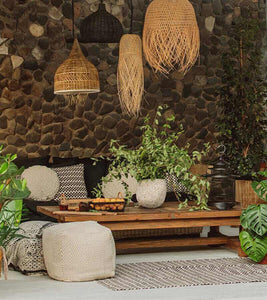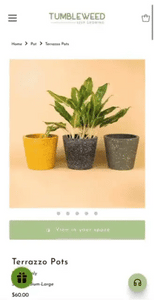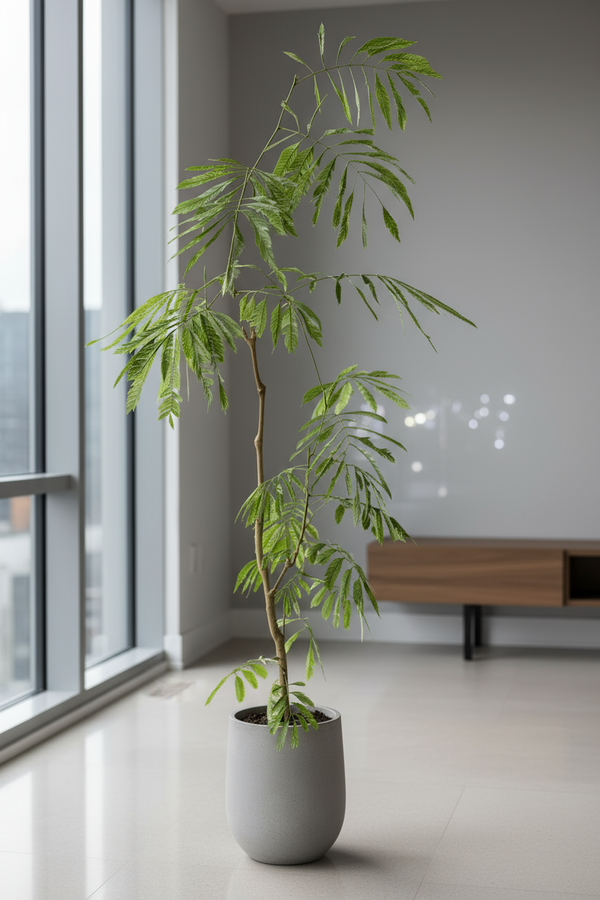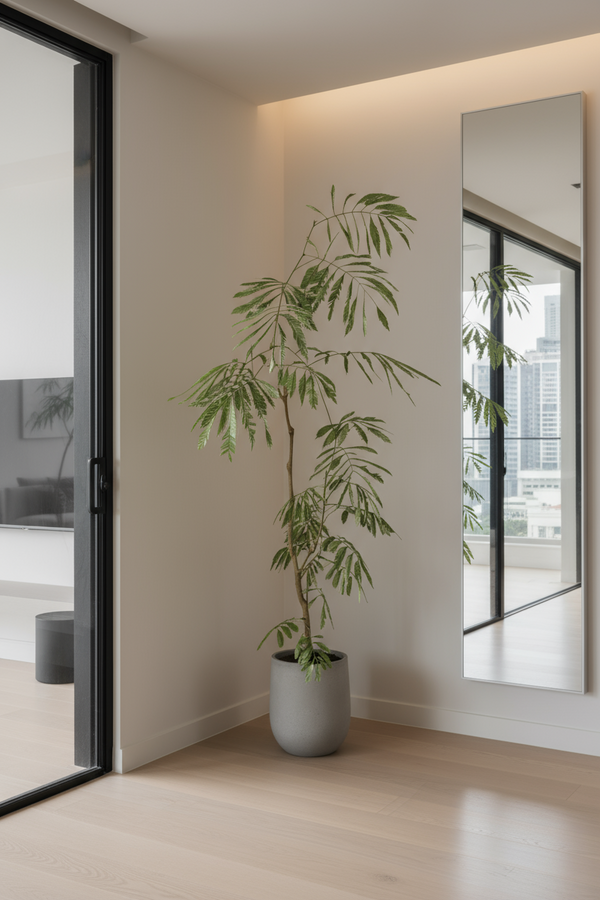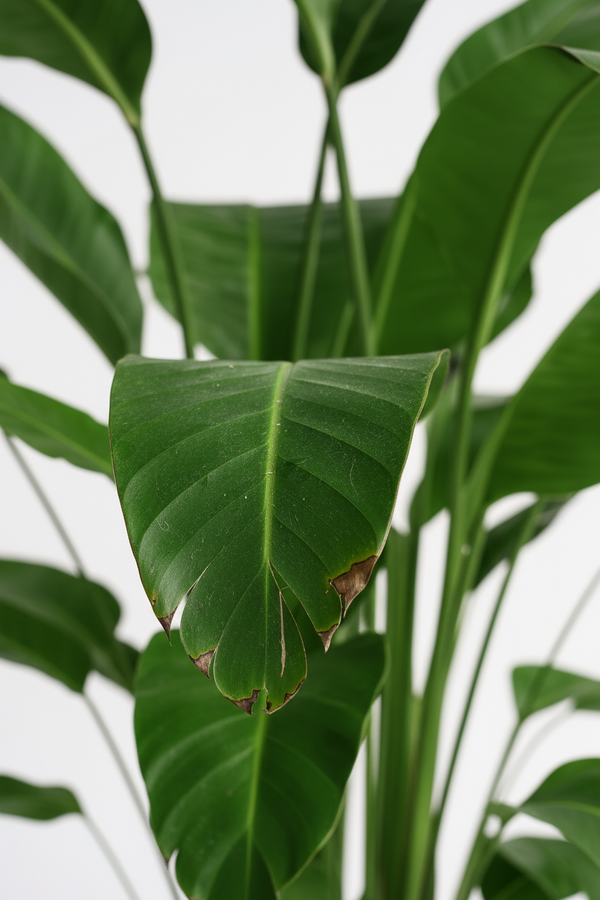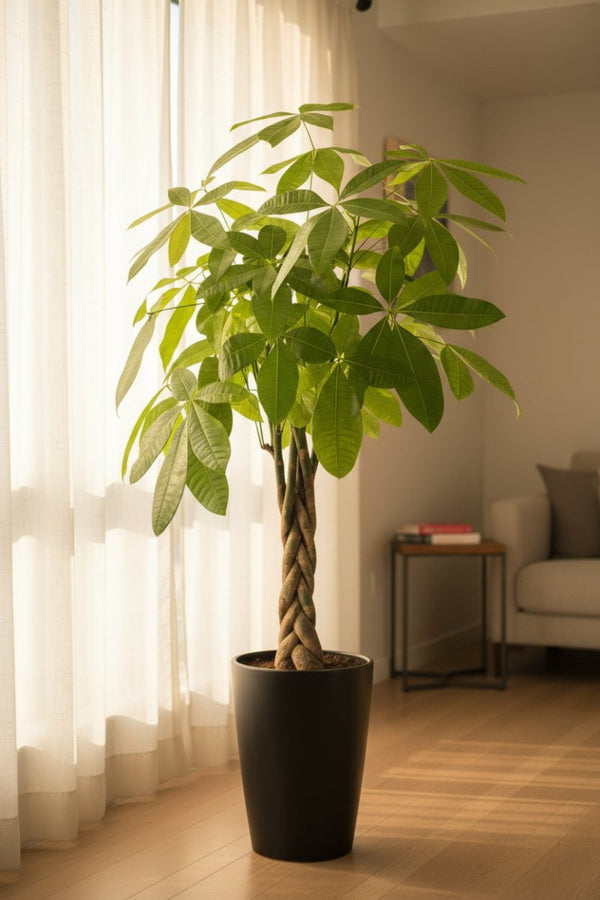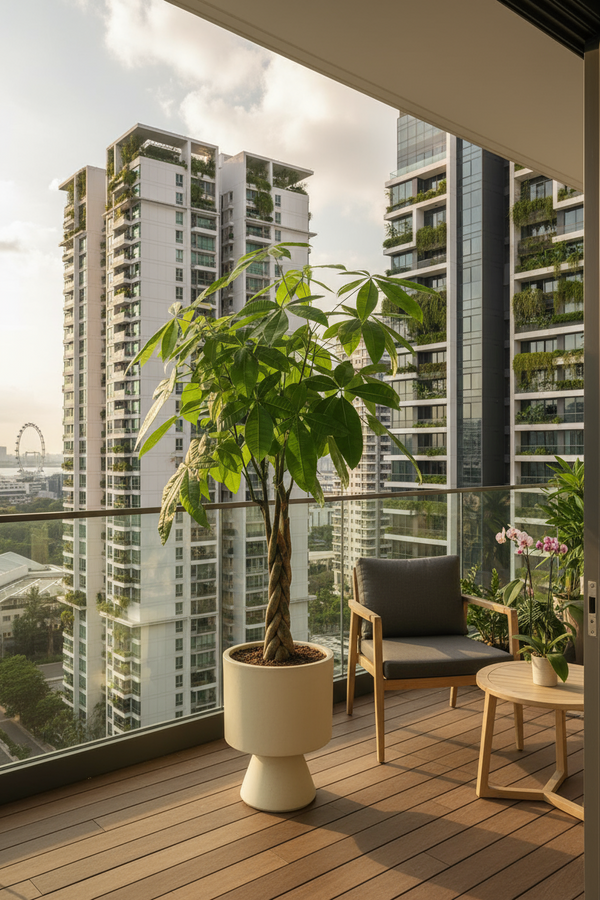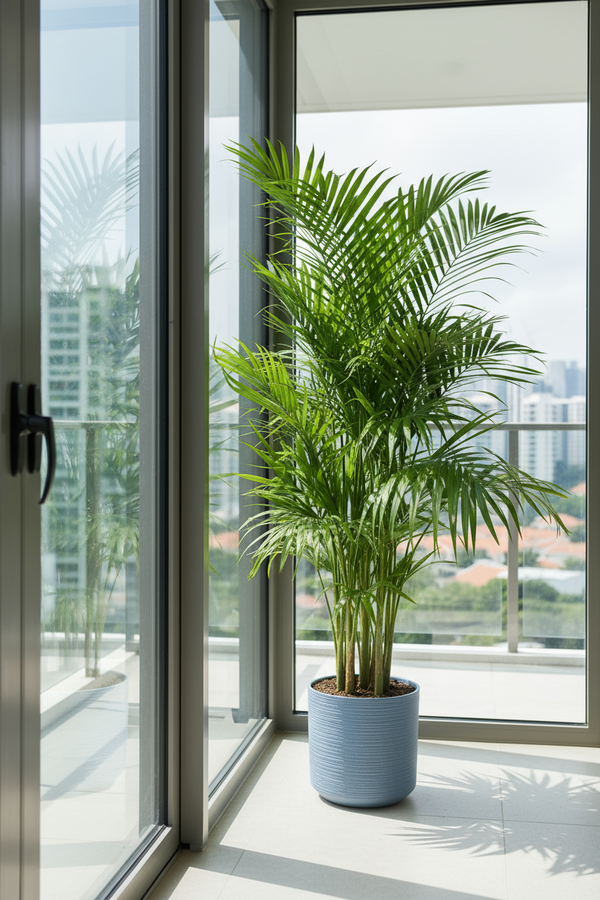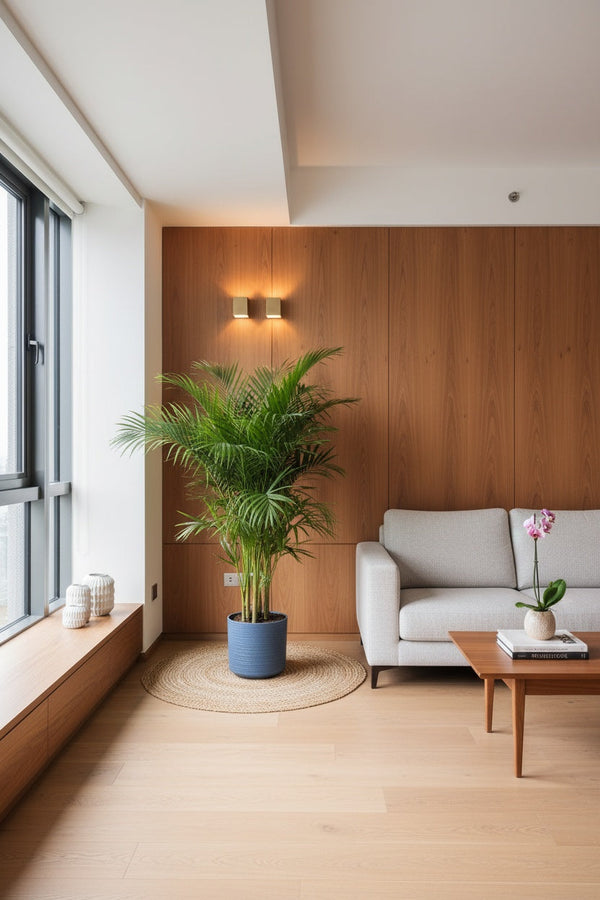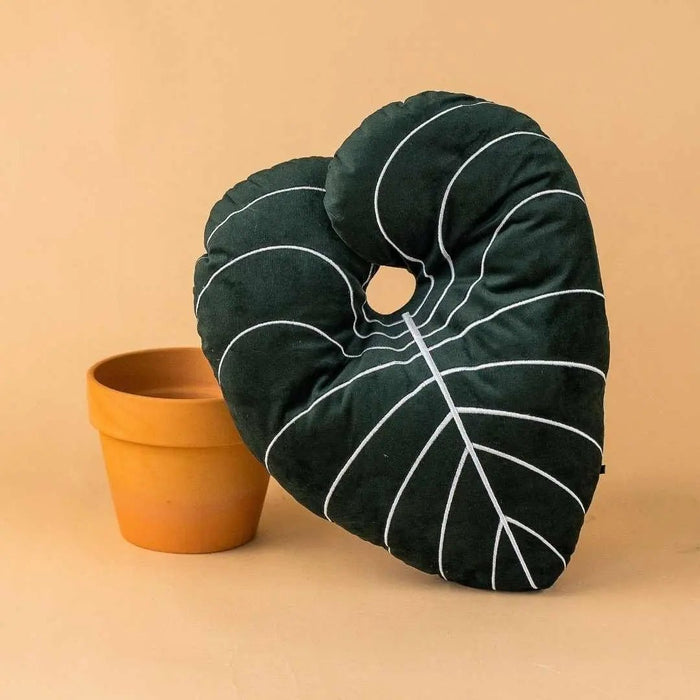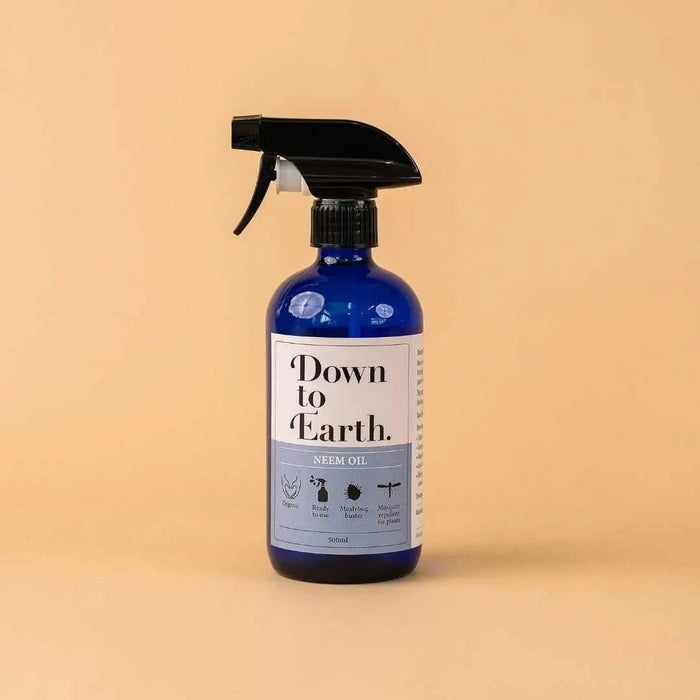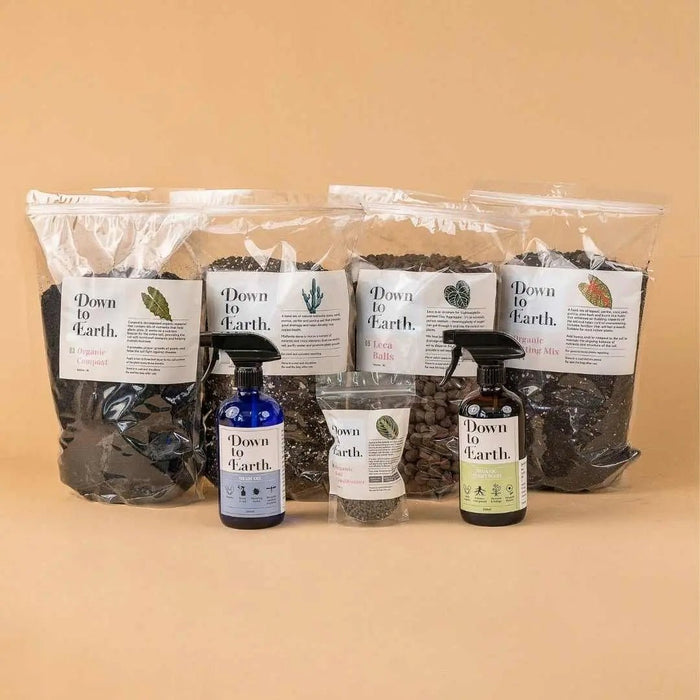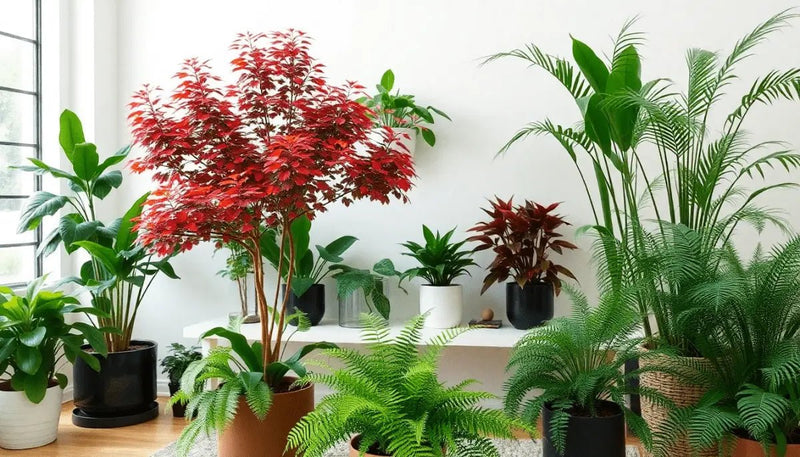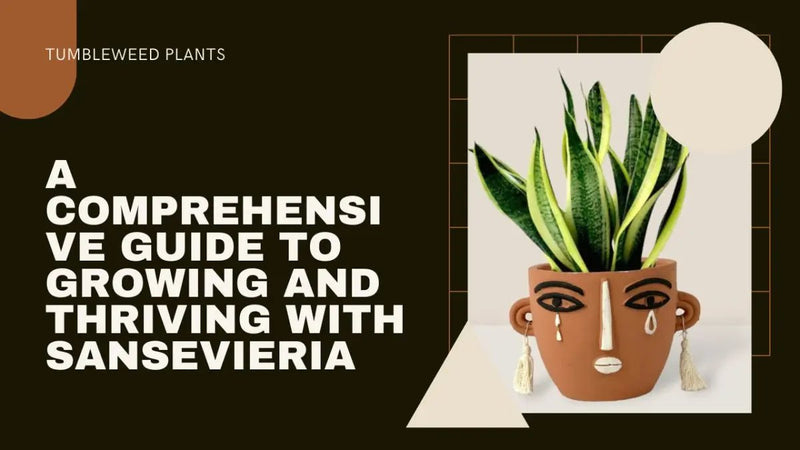10 Houseplants That Are Perfect for Beginners
Posted on March 26 2025
Introduction: Why Houseplants Are Great for Beginners
Houseplants offer an accessible entry point for individuals new to gardening or taking care of plants. Their manageable size, straightforward care requirements, and wide variety make them an ideal choice for beginners looking to enjoy the process of nurturing living greenery within their homes. The rise of indoor plants has transformed the way people decorate their spaces, making houseplants a popular way to combine aesthetics with natural benefits.
One primary reason houseplants are well-suited for beginners is their adaptability to indoor environments. Unlike outdoor plants that may require specific climate conditions, many houseplants can thrive in low light or fluctuating indoor temperatures, making them easier to manage for those without extensive gardening experience. Furthermore, houseplants often demand minimal maintenance, with basic care routines such as watering, pruning, and occasional fertilizing.
Houseplants also cater to busy lifestyles. For individuals balancing work and personal responsibilities, the majority of beginner-friendly houseplants do not need constant attention. Varieties such as succulents, pothos, and spider plants can tolerate infrequent watering, which reduces the pressure of daily care. This level of convenience promotes confidence and helps budding plant enthusiasts develop sustainable habits.
In addition to their ease of maintenance, houseplants deliver notable benefits. Their presence can improve air quality, boost mood, and create a relaxing atmosphere, all of which align with a beginner’s desire to see results and feel rewarded for their efforts. The tactile and visual experience of tending to greenery also helps many beginners cultivate a sense of mindfulness and accomplishment.
Beginners will appreciate the flexibility of houseplants in terms of size and placement. Small pots fit comfortably on desks, windowsills, or shelves, enabling individuals to start small and expand their collection as they gain familiarity with plant care. Even large houseplants that serve as focal pieces require surprisingly minimal effort once the right conditions are set up.
Finally, houseplants foster a learning curve that is neither overwhelming nor intimidating. They introduce beginners to foundational gardening skills, including understanding light needs, experimenting with watering schedules, and recognizing signs of plant health. This gradual learning process equips individuals with the confidence and knowledge needed to enjoy long-term success with plants.
The Benefits of Adding Houseplants to Your Home
Adding houseplants to a living space offers numerous benefits that extend beyond mere aesthetic appeal. They have a remarkable ability to enhance indoor environments by improving air quality and creating a more inviting atmosphere. Incorporating houseplants in home decor helps to elevate mood, reduce stress, and foster a sense of connection with nature, even within urban settings.
Enhanced Indoor Air Quality
Houseplants play a significant role in purifying indoor air by absorbing pollutants and releasing oxygen. Common toxins found in modern households, such as formaldehyde, benzene, and carbon dioxide, can be mitigated by plants like peace lilies or spider plants. They also contribute to maintaining proper humidity levels, which can prevent respiratory discomfort and dryness.
Improved Mental Well-Being
Living among greenery promotes relaxation and mental clarity. Studies have shown that exposure to plants can lower cortisol levels, the primary stress hormone. The presence of houseplants may provide therapeutic benefits, making them an effective tool to alleviate anxiety or fatigue. Their calming effect can transform an ordinary room into a more peaceful and rejuvenating haven.
Boosted Productivity
Houseplants can positively influence productivity and creativity, especially in workspaces. They create a more stimulating environment by breaking the monotony of artificial surroundings. Researchers have found that plants on a desk or within view can improve concentration and memory retention, making them ideal companions for home offices.
Decorative Versatility
Beyond their functional advantages, houseplants offer unmatched versatility in interior design. They come in various shapes, sizes, textures, and leaf patterns, allowing homeowners to personalize their spaces effortlessly. Whether placed on shelves, hung from ceilings, or set in colorful pots, they seamlessly complement any style, from minimalist to bohemian.
Connection to Nature
With many people spending the majority of their time indoors, houseplants provide an opportunity to reconnect with the natural world. Tending to plants promotes mindfulness and strengthens a sense of stewardship, while the act of nurturing them instills patience and appreciation for growth and life cycles.
The incorporation of greenery is not only a visual upgrade but also an enhancement of the overall indoor experience, creating spaces that feel healthier and more harmonious.
What Makes a Houseplant Beginner-Friendly?
Not all houseplants demand the same level of care, making some much more suitable for beginners than others. Several factors contribute to determining whether a houseplant is beginner-friendly. By understanding these characteristics, one can confidently select plants that are the easiest to nurture and maintain.
1. Low Maintenance Requirements
Beginner-friendly houseplants generally thrive with minimal attention. These plants do not require frequent watering, pruning, or special techniques to flourish. Their ability to grow well in a wide range of care conditions makes them forgiving for novices.
2. Hardiness and Resilience
Plants with tough, hardy traits are better suited for beginners. Resilient plants can tolerate occasional lapses in watering, imperfect lighting conditions, or slight neglect without showing signs of distress. This durability gives new plant parents room to learn without fear of losing their plants.
3. Adaptability to Common Indoor Conditions
Some houseplants thrive under specific environmental conditions, but beginner-friendly types are more adaptable. Plants that tolerate low light, irregular humidity levels, and room-temperature environments are ideal for indoor growing in typical households.
4. Effortless Propagation
Beginner-friendly plants often reproduce easily through simple propagation methods, such as stem clippings or division. This allows beginners to expand their plant collection with minimal expertise.
5. Pest and Disease Resistance
Houseplants that are naturally resistant to pests and diseases are better choices for beginners. They decrease the need for constant monitoring and a deep understanding of plant health management.
These traits make some houseplants more conducive to successful results for those starting their indoor gardening journey. Proper plant selection ensures confidence-building experiences.
1. Snake Plant (Sansevieria): Low Maintenance and Resilient
The Snake Plant, scientifically known as Sansevieria, is one of the most adaptable and resilient indoor plants, making it ideal for beginners. Its striking upright leaves with architectural designs and varied patterns bring a modern aesthetic to any living space. Known for their tolerance to neglect, these plants require minimal care to thrive and can survive in a range of conditions that might challenge other houseplants.
Key Features of the Snake Plant:
- Hardiness: This plant can withstand extended periods of neglect, including irregular watering schedules. It stores water in its thick leaves, enabling it to survive even if forgotten.
- Light Tolerance: A Snake Plant adapts to different lighting situations, from bright, indirect light to low light. However, it grows best in moderate to bright indirect sunlight and stays healthy even in poorly lit areas.
- Air Purification: Acting as a natural air filter, the Snake Plant helps remove toxins like formaldehyde and benzene from the air, thus improving indoor air quality.
Care Requirements:
- Watering: Overwatering is the primary pitfall for this plant. Experts recommend allowing the soil to dry out completely between waterings. In general, watering once every 2-6 weeks, depending on the season, is sufficient.
- Soil and Potting: Well-draining soil is essential to prevent root rot. Use a pot with drainage holes to maintain a healthy root system.
- Temperature: It thrives in warm climates but can tolerate low temperatures down to 50°F. Avoid exposing it to frost or cold drafts, as these conditions can damage the leaves.
Advantages for Beginners:
The Snake Plant’s durability and ease of care set it apart as a beginner-friendly choice. With its ability to tolerate inconsistent care schedules and its attractive appearance, it becomes a versatile addition to any home or office setup.
2. Pothos (Epipremnum aureum): The User-Friendly Vine
Pothos, scientifically known as Epipremnum aureum, is widely recognized for its distinctively heart-shaped leaves and cascading vines. This versatile plant is a favorite among beginner houseplant enthusiasts due to its exceptional adaptability and low-maintenance nature. Its forgiving attitude toward neglect makes it an ideal choice for those new to indoor greenery.
One of the most significant advantages of Pothos is its tolerance for varied lighting conditions. While it thrives in bright, indirect light, it adapts well to low-light environments, making it suitable for spaces with limited natural illumination. The plant showcases variegated leaves, which can come in green and yellow, white, or even neon tones, depending on the variety. Common cultivars include Golden Pothos, Marble Queen, and Neon Pothos.
Pothos requires minimal watering, preferring soil that dries out between waterings. Overwatering should be avoided, as it can lead to root rot. Its ability to bounce back after neglect ensures that even busy individuals can maintain its health and vibrancy. Additionally, Pothos thrives in typical indoor temperatures ranging from 65°F to 85°F (18°C to 29°C), which adds to its ease of care.
Propagation is remarkably simple with Pothos; it can be grown from cuttings placed in water or soil, allowing for effortless expansion of the plant or sharing with family and friends. This characteristic makes it a cost-effective choice for those looking to grow their collection without purchasing additional plants. The trailing vines can also be trained to climb or drape, depending on personal design preferences and space considerations.
Pothos is regarded as an effective air purifier, capable of removing toxins like formaldehyde from the air. However, it must be noted that this plant is toxic to pets if ingested, so homes with curious animals should take precautions when choosing its location. By integrating this versatile and attractive plant, beginners can easily achieve a lush and inviting indoor environment.
3. Spider Plant (Chlorophytum comosum): Adaptable and Air-Purifying
The Spider Plant (Chlorophytum comosum) is highly regarded for its adaptability, making it one of the most beginner-friendly houseplants. Known for its striking, arching leaves with green and white stripes, this plant effortlessly enhances any indoor space. Its natural air-purifying abilities add to its attractiveness, as it is capable of removing toxins such as carbon monoxide, formaldehyde, and xylene from the environment.
Growing Conditions: Spider Plants thrive in a variety of conditions, offering remarkable flexibility for novice gardeners. They prefer bright, indirect light but can also grow in low light environments, making them suitable for poorly lit spaces. Moderate temperatures between 65°F and 75°F are ideal for optimal growth, though they can tolerate slightly cooler conditions.
Watering Needs: This plant does not require frequent watering, as it is drought-tolerant to some extent. Spider Plants appreciate a balanced watering schedule; keeping the soil slightly moist is recommended. Allow the top inch of soil to dry out between watering sessions to prevent overwatering, which can lead to root rot.
Maintenance Tips: Spider Plants grow relatively quickly and may produce small plantlets, often referred to as “spiderettes,” which dangle attractively from the parent plant. These can be propagated by simply planting them in soil, making this a rewarding option for beginners looking to expand their indoor garden. Occasionally, pruning of dead leaves or trimming of overgrown plantlets keeps the plant looking tidy and healthy.
Pest Resistance: Spider Plants are generally resistant to most common indoor pests, which minimizes the need for extensive care. However, in rare cases, they might attract aphids or mites. If pests are detected, they can be controlled using a gentle insecticidal soap.
With its ability to adapt to various conditions and its reputation for improving air quality, the Spider Plant is a true asset to any indoor space, especially for those starting their plant-care journey.
4. Peace Lily (Spathiphyllum): Elegant and Easy to Grow
The Peace Lily, scientifically known as Spathiphyllum, is a staple for beginner indoor gardeners and a favorite among houseplant enthusiasts. Its elegant, dark green leaves and striking white flowers make it a visually appealing choice for any interior space. This tropical evergreen plant is not only aesthetically pleasing but also highly adaptable, making it one of the easiest houseplants to grow and maintain.
One of the most notable characteristics of the Peace Lily is its ability to thrive in low to moderate light conditions, making it an excellent option for homes or offices with limited natural light. Although it prefers bright, indirect sunlight, it can survive in dim corners as well. When cared for properly, its iconic white blooms may last for several weeks, adding a touch of sophistication to its surroundings.
Watering requirements for this plant are straightforward, making it ideal for novices. It prefers slightly moist soil but can tolerate brief periods of drought, thanks to its hardy nature. Overwatering, however, should be avoided, as it may lead to root rot. Observing its leaves can provide clues—they droop when the plant is thirsty and perk up shortly after watering.
The Peace Lily also contributes to improving indoor air quality by absorbing toxins like carbon monoxide, benzene, and formaldehyde. Its air-purifying abilities have been highlighted in NASA’s Clean Air Study, making it not only beautiful but also functional.
However, one aspect to note is its mild toxicity when ingested, which makes it unsuitable for households with curious pets or small children. By keeping it out of reach, one can safely enjoy its benefits.
5. ZZ Plant (Zamioculcas zamiifolia): Tolerant and Stylish
The ZZ Plant, scientifically known as Zamioculcas zamiifolia, stands out as a resilient yet visually appealing houseplant suitable for beginners. This tropical perennial has gained popularity for its ability to thrive in diverse indoor conditions, effortlessly adding a touch of elegance to any space.
Unique Features of the ZZ Plant
The ZZ Plant is distinguished by its glossy, dark green, waxy leaves that exhibit a striking, sculptural appearance. These leaves grow in an upright fashion from thick, fleshy rhizomes, contributing to the plant’s unique aesthetics. Its ability to store water in these rhizomes allows it to endure periods of neglect, making it ideal for those who may not yet have consistent watering habits.
Care Requirements
- Lighting: The ZZ Plant adapts to a range of lighting environments, performing well in low to medium indirect light. While brighter conditions may encourage faster growth, direct sunlight can scorch its leaves, making shaded areas or well-lit interiors preferable.
- Watering: Overwatering is one of the few issues this plant faces, as it prefers its soil to dry out completely between waterings. A monthly watering schedule generally suffices, depending on the plant’s environment.
- Humidity: Native to arid climates, the ZZ Plant tolerates average indoor humidity levels. It does not require misting or specialized care to manage its moisture needs.
- Soil: A well-draining soil, such as a mixture of potting soil and perlite, ensures optimal growth and maintains the integrity of the plant’s root system.
Benefits for Beginners
The ZZ Plant features a forgiving disposition, tolerating missed waterings, poor lighting, and even extended periods of neglect. It is also nearly immune to pests and diseases, which can be common issues for new plant owners. This low-maintenance attribute is paired with an ability to purify air, offering aesthetic and health benefits alike.
Ultimately, the ZZ Plant merges style with functionality, making it a staple choice for any collection of beginner-friendly houseplants. Its durability and understated charm make it a perennial favorite.
6. Aloe Vera: The Healing Succulent for Beginners
Known for its impressive ability to thrive with minimal maintenance, Aloe Vera is an excellent houseplant for beginners. Its reputation as a healing succulent stems from the gel found inside its fleshy green leaves, which has been traditionally used for soothing burns, cuts, and other skin irritations. Adaptable to various indoor conditions, Aloe Vera’s resilience makes it an ideal choice for those new to caring for plants.
Key Features of Aloe Vera
- Unique Appearance: Sporting thick, fleshy leaves with pointed tips that grow in a rosette pattern, Aloe Vera adds visual interest to any space.
- Healing Properties: The gel inside Aloe Vera leaves contains vitamins, minerals, and enzymes that offer soothing effects for external skin issues.
- Air Purification: Aloe Vera contributes to indoor air quality improvement by filtering toxins and increasing oxygen levels.
Growing Requirements for Aloe Vera
Aloe Vera thrives when provided with a combination of indirect sunlight, warm temperatures, and well-draining soil. Keeping the plant near a bright window ensures it receives adequate sunlight without being scorched. Proper drainage is essential to prevent roots from sitting in water, which can lead to damage or rot.
Maintenance Tips
- Watering: Aloe Vera prefers infrequent watering. Allow the soil to dry out completely between watering sessions to mimic its natural desert environment.
- Fertilizing: Minimal fertilization is needed. Use a diluted succulent fertilizer during the spring and summer months for optimal growth.
- Repotting: When the plant outgrows its container, repot it in a pot with drainage holes and fresh succulent mix.
A resilient plant suitable for busy lifestyles, Aloe Vera rewards its caregivers with health benefits and effortlessly enhances any living space.
7. Jade Plant (Crassula ovata): A Hardy Symbol of Wealth
The jade plant, scientifically known as Crassula ovata, is a resilient succulent favored for its thick, glossy green leaves and woody stems that resemble miniature tree branches. Its reputation as a “symbol of wealth” stems from the belief in feng shui practices, where the plant is thought to attract prosperity and success. This feature makes it not only an excellent houseplant for beginners but a thoughtful addition to workspaces and living areas alike.
Jade plants thrive in bright, indirect light, although they can tolerate some direct sunlight as well. Windowsills facing south or east are ideal spots for these succulents. The plant’s adaptability to varied indoor conditions makes it a reliable choice for those who might forget to water regularly, as it stores water in its fleshy leaves. Overwatering, however, can lead to root rot, so it is essential to let the soil dry out completely between watering sessions.
Temperature requirements for jade plants align closely with typical household conditions. They prefer temperatures between 55°F and 75°F and should be kept away from cold drafts during winter months. Additionally, jade plants benefit from occasional fertilization during their active growing season, usually spring and summer. Using a balanced, water-soluble fertilizer ensures steady growth.
Pruning contributes to the jade plant’s appearance and overall health, allowing owners to shape the plant into their desired aesthetic while removing any dead or damaged foliage. This encourages healthier stems and more vibrant foliage. Over time, mature jade plants may develop red edges on their leaves, adding an attractive pop of color to their already charming look.
Propagating jade plants offers an easy way to extend their presence in the home. Stem or leaf cuttings root effortlessly when placed in well-draining soil, making them a beginner-friendly option for plant enthusiasts eager to learn propagation techniques. The jade plant’s longevity and ease of care combine with its symbolic meaning to make it a cherished companion in households and offices.
8. Rubber Plant (Ficus elastica): A Bold and Forgiving Foliage
The Rubber Plant, scientifically known as Ficus elastica, is highly regarded for its striking beauty and resilience, making it an excellent choice for beginners. Its large, glossy leaves create a bold visual impact, effortlessly transforming any indoor space into an elegant, green sanctuary.
Key Characteristics
- Appearance: The plant boasts broad, dark green leaves with a waxy texture. Some varieties feature reddish hues or variegated patterns, adding depth and unique charm to its appearance.
- Lighting Requirements: Rubber Plants prefer bright, indirect sunlight but can tolerate medium-light conditions. Excessive direct sunlight may scorch the leaves, while low-light environments can slow their growth.
- Growth Habits: Growing upward rather than spreading, these plants can reach impressive heights—up to 10 feet indoors under optimal conditions. Pruning helps control their size and shape.
Care Guidelines
- Watering: Rubber Plants are forgiving when it comes to watering. Allow the top inch of soil to dry out before watering again. Overwatering may lead to root rot, while underwatering can cause leaf drop.
- Humidity: They thrive in environments with moderate humidity but can adapt to typical indoor levels. Misting the leaves occasionally ensures they remain vibrant and dust-free.
- Temperature: Warm temperatures ranging from 60°F to 75°F are ideal, as the plant dislikes cold drafts or sudden drops in temperature.
- Soil: Well-draining potting soil works best. Adding a layer of organic matter or peat moss supports healthy growth.
Additional Tips
Rubber Plants are mildly toxic if ingested, so caution should be exercised around pets or small children. Regularly wiping their leaves enhances their sheen while ensuring proper photosynthesis. Fertilizing every six to eight weeks during the growing season promotes lush growth and overall vigor.
This low-maintenance plant is a blend of durability and aesthetic appeal, perfect for novice gardeners looking to cultivate indoor greenery. Its capacity to tolerate less-than-perfect conditions underscores its beginner-friendly nature.
9. Boston Fern (Nephrolepis exaltata): Lush and Simple to Maintain
The Boston Fern, scientifically named Nephrolepis exaltata, is a timeless houseplant valued for its cascading, feather-like fronds and vibrant green appearance. Its soft, arching leaves introduce a sense of tranquility and natural elegance to any indoor setting, making it an excellent choice for beginners who seek a visually appealing yet low-maintenance plant.
Native to tropical and subtropical regions, the Boston Fern thrives in moderately humid and well-lit environments. It prefers indirect sunlight, as overly harsh direct rays may cause its fronds to scorch or discolor. A bright room with filtered light, such as near a north- or east-facing window, provides ideal growing conditions.
This resilient fern is known for its ability to adapt to typical household humidity levels, though it benefits significantly from occasional misting or placement near a humidifier. It thrives in temperatures between 60°F and 75°F, making it well-suited for indoor cultivation. Soil enriched with organic matter, such as a peat-based potting mix, works best for its growth, as it maintains consistent moisture retention.
Watering is crucial for the health of the Boston Fern. Its soil should be kept moderately moist, but overwatering must be avoided to prevent root rot. A good rule of thumb is to check the top inch of the soil; if dry, it is time to water. Additionally, monthly feeding with a diluted, balanced liquid fertilizer can promote lush, healthy fronds.
Despite its simplicity, a Boston Fern occasionally sheds fronds, a natural part of its growth process. Promptly removing dead or yellowing leaves can prevent mess and keep the plant looking fresh. For households with pets, it is worth noting that Boston Ferns are non-toxic, making them a safer option for furry companions. With minimal care, this lush houseplant adds timeless charm to indoor spaces.
10. Bamboo Palm (Chamaedorea seifrizii): Soothing and Beginner-Friendly
The Bamboo Palm, scientifically known as Chamaedorea seifrizii, is a graceful and elegant houseplant renowned for its air-purifying qualities and ability to thrive in indoor environments. Its delicate, arching fronds, reminiscent of bamboo stalks, provide a soothing visual effect, making it an excellent choice for creating a peaceful atmosphere in homes or offices. With its natural charm and low-maintenance requirements, this tropical beauty is ideal for beginners embarking on their plant parenting journey.
Native to Central and South America, the Bamboo Palm is well-suited to indoor living due to its ability to adapt to indirect light conditions. It grows best in medium to bright light, but it can tolerate lower light levels without significant issues. Excessive exposure to direct sunlight, however, should be avoided as it may scorch its delicate leaves. This plant typically thrives in temperatures ranging from 65°F to 75°F, which aligns perfectly with most indoor climate conditions.
The Bamboo Palm does not demand frequent watering, making it beginner-friendly. It prefers slightly moist soil but should not sit in soggy conditions, as this can lead to root rot. Allowing the top inch of soil to dry out between waterings is crucial to maintaining its health. A well-draining potting mix is essential, and repotting every one to two years ensures proper root aeration as it grows.
To maintain vibrancy, occasional misting helps increase humidity around the plant, which mimics its native tropical environment. Fertilizing every couple of months during the active growing season with a balanced liquid fertilizer further promotes healthy growth. The Bamboo Palm is non-toxic, making it safe for households with children or pets. Additionally, its ability to filter common indoor toxins from the air adds to its practicality and appeal. Skilled at balancing function and beauty, the Bamboo Palm is a rewarding addition to any living space.
How to Care for Your Houseplants: Essential Tips for Success
Proper care for houseplants is crucial to their health and longevity. Beginners often find it understandable to connect their plant care routine with simple habits tied to light, water, and maintenance. By following a few essential tips, even the novice can ensure thriving indoor plants.
Light Requirements
Houseplants generally have specific lighting needs based on their type.
- Bright, indirect light: Most houseplants, such as pothos and snake plants, thrive in indirect sunlight.
- Low light tolerance: Plants like peace lilies and ZZ plants grow well in dim corners or rooms with minimal natural light.
- Direct sunlight: Succulents and cacti flourish in sunny spots near south-facing windows.
Determining the right placement involves careful observation of the plant’s response—brown or yellow leaves typically signify overexposure or insufficient light.
Watering Strategies
Overwatering is one of the most common mistakes made by beginners.
- Know your plant’s needs: Some plants prefer moist soil, while others, like succulents, require infrequent watering.
- Check soil moisture: The top inch of soil should be dry before watering most houseplants.
- Establish consistency: Use lukewarm water and ensure excess liquid drains through the pot’s bottom holes.
An effective soil consistency prevents root rot and ensures proper hydration.
Choose the Right Soil and Pot
Selecting the correct soil and container plays a significant role in plant longevity.
- Soil preference: While standard potting mix works for most houseplants, some plants, like orchids, require unique blends such as bark-heavy substrates.
- Pot drainage: Always opt for containers with drainage holes to avoid water stagnation.
Additionally, repotting houseplants when they outgrow their containers encourages continued healthy growth.
Monitor Temperature and Humidity
Temperature fluctuations and humidity levels impact plant health significantly.
- Ideal conditions: Most houseplants prefer a range of 65°F to 75°F and moderate humidity.
- Humidity adjustment: Use pebble trays or a humidifier to boost moisture for tropical plants.
Drafts from windows and air conditioners should be avoided to minimize stress.
Regular Maintenance
Routine care is essential for vibrant, growing houseplants.
- Pruning: Remove dead leaves and stems to promote healthy growth.
- Fertilization: Use well-balanced fertilizer during the growing season to enhance vitality.
- Pest prevention: Inspect leaves and soil for pests like spider mites or fungus gnats, addressing problems at the earliest sign.
By adhering to consistent maintenance, houseplants are more likely to thrive indoors for the long term.
Common Mistakes Beginners Should Avoid with Houseplants
When caring for houseplants, beginners often encounter pitfalls that can hinder their success. Understanding these common mistakes and taking proactive steps to avoid them can significantly increase the health and longevity of indoor plants.
Neglecting Proper Research
Many beginners choose houseplants based solely on their visual appeal without considering their care requirements. Each plant species has unique needs in terms of light, water, humidity, and temperature. Failing to research these needs can lead to mismatched care and unhealthy plants.
Overwatering
One of the most frequent mistakes is overwatering. Beginners may assume plants need constant hydration, but excessive watering can lead to root rot and fungal diseases. It’s crucial to understand the soil type and drying-out needs of each plant to avoid this issue.
Ignoring Light Requirements
Houseplants thrive in specific lighting conditions. Beginners may place plants in spots that don’t provide adequate light or, conversely, expose them to direct sunlight that can scorch leaves. Considering whether the plant prefers low light, indirect light, or bright direct light is essential.
Using the Wrong Containers
New plant owners often overlook the importance of choosing containers with proper drainage. Pots without drainage holes can trap excess water, resulting in waterlogged soil. Investing in appropriate pots ensures optimal root health.
Skipping Routine Care
Beginners may forget to dust leaves, fertilize plants, or periodically repot them. These small tasks are vital to maintaining plant health, and neglecting them can stunt growth or lead to unhealthy foliage.
Overcrowding Plants
A common oversight is placing plants too close to each other. Insufficient airflow can promote pest infestations and diseases, while competition for light can result in uneven growth. Providing sufficient space is key.
Impatience During Growth
It’s natural for beginners to expect rapid results, but most houseplants grow slowly. Over-fertilizing or overwatering in an attempt to force growth can harm the plant. Understanding the natural pace of growth is important for patience and proper care.
By staying vigilant about these common errors, beginners can create an environment where their houseplants thrive, ensuring a rewarding and aesthetically pleasing experience.
Conclusion: Enjoying the Rewards of Indoor Greenery
Welcoming houseplants into indoor spaces enriches lives in a multitude of ways. Their presence enhances aesthetic appeal, creates soothing environments, and fosters a fulfilling connection with nature. Beginners discovering the joys of houseplant care can appreciate the accessibility of species that require minimal effort to thrive. Through proper selection, even novice growers can achieve success while enjoying the numerous benefits associated with indoor greenery.
Houseplants not only complement décor but also provide practical advantages in daily living. They contribute to improved air quality by filtering toxins and releasing oxygen, offering tangible health benefits to occupants. Observing the gentle growth of greenery brings a sense of accomplishment and cultivates patience. This therapeutic effect can alleviate stress and promote mental well-being, anchoring the individual’s sense of tranquility and balance. Such personal rewards amplify the motivation to nurture plants further, transforming the home into a sanctuary.
Establishing consistency in plant care ensures their well-being over time. Simple practices such as choosing the right potting soil, monitoring water levels, and maintaining ideal light exposure play a crucial role in fostering thriving indoor plants. Encouragingly, modern tools such as self-watering pots and digital timers can assist beginners as they expand their gardening knowledge and confidence. Effective plant selection tailored to specific environments paves the way for flourishing green companions in living spaces.
Ultimately, the companionship of houseplants elevates home life and sparks the desire to explore more intricate species as experience grows. Every leaf unfurled is an invitation to deepen the bond with nature, one plant at a time, fostering a rewarding journey of growth and discovery.

